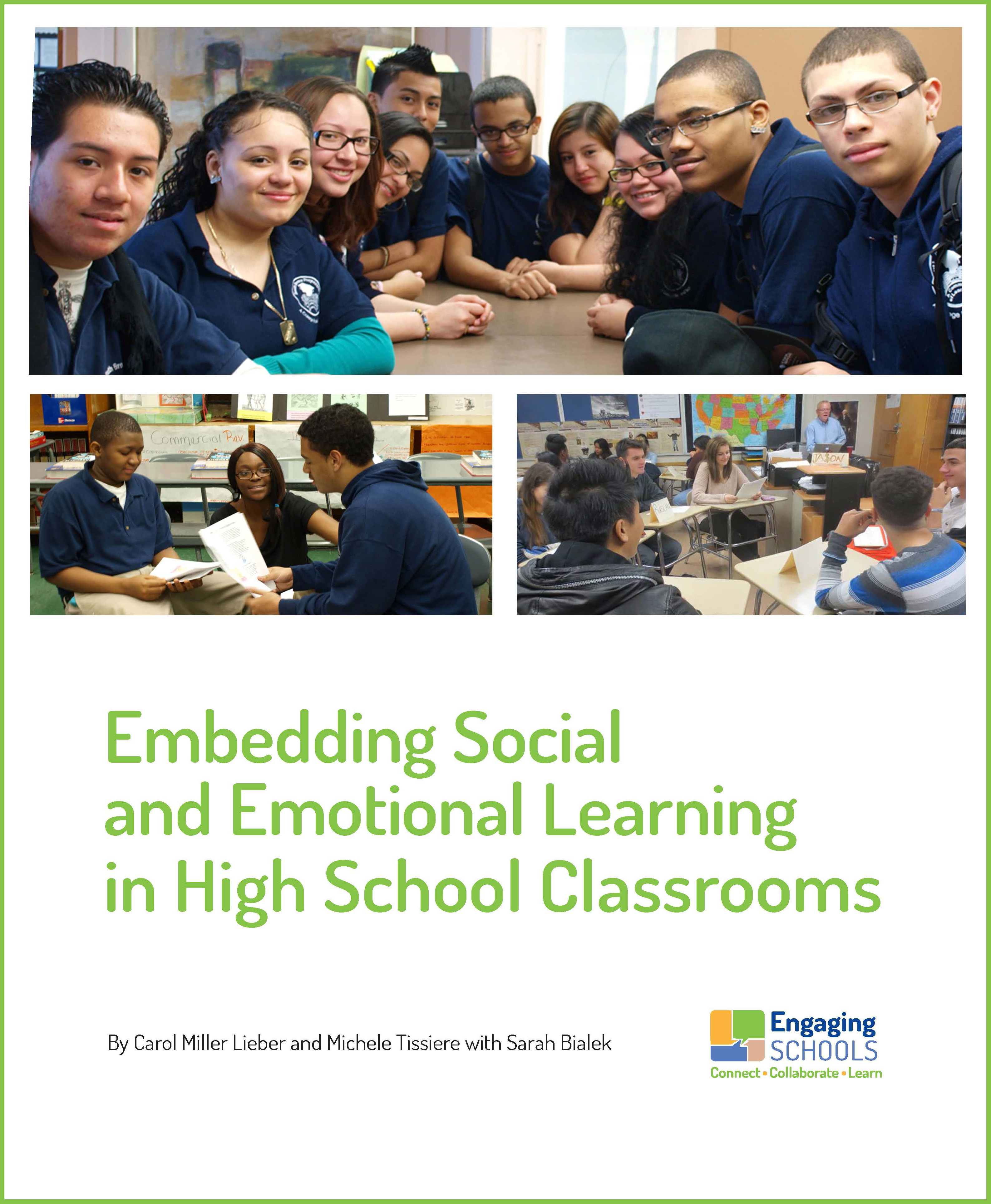Engaging schools is pleased to announce a new white paper, Embedding Social and Emotional Learning in High School Classrooms, to help districts and schools meet the challenges of implementing social and emotional learning (SEL) in high schools. Drawing on more than 20 years’ experience working with secondary school leaders and classroom teachers, we advocate that embedding SEL instruction and support into classroom learning is foundational to reaching all students every day. We invite you to download and share the white paper. 
Executive Summary
Well-researched strategies exist for implementing social and emotional learning (SEL) in elementary grades in ways that reach and impact every child, but there is insufficient clarity and far less research on how to implement SEL in high school settings. Schools are wrestling with how to address SEL in a way that is integral, rather than added on, and reaches all students.
We believe that a foundational approach to implementing SEL in high schools is embedding SEL instruction and support into every classroom. This approach provides an opportunity for high school teachers to systematically integrate SEL skills into their teaching practice in order to develop students’ cognitive, social, and emotional competencies. It also creates a more equitable, engaging, and culturally and developmentally responsive environment where meaningful learning and social experiences take place.
Because SEL competencies include skills directly linked to increased academic success and college and career readiness, we have defined a set of Learning and Life Competencies for high school, college, and career success. They align with the developmental and cultural needs of secondary students and the academic expectations held by high school teachers.
This paper presents our framework for using students’ mindsets as an entry point for teaching four broad student skill sets — self-awareness, self-management, social efficacy, and academic efficacy — in ways that are developmentally appropriate, culturally responsive, and academically relevant to high school students in classroom settings. The specific Learning and Life Competencies flow from these skill sets. Each competency (e.g., cooperation, participation, and organizing to learn and study) includes explicit desired target behaviors and understandings that can be modeled, taught, practiced, and assessed within any classroom learning experience.
Learning and Life Competencies are taught and practiced within four classroom learning domains: positive personal relationships, learning protocols and unit design, academic support, and restorative and accountable discipline and behavior support. These domains incorporate evidence-based practices and strategies that attend to students’ developmental and cultural needs while strengthening students’ social and emotional competencies and promoting academic behaviors associated with improved student performance.
Educational leaders have a critical opportunity to develop and support their own as well as teachers’ capacities for this work. We offer recommendations for professional learning that align with the complex demands placed upon teachers in secondary schools. We also outline measures and structures for assessment of Learning and Life Competencies.
We acknowledge that more research is needed, as is the funding to support it. In order to reach every student, secondary school leaders will need to develop thoughtful and innovative alternatives to more traditional SEL approaches. In the search for more effective delivery of SEL in high schools, we call on districts to strongly consider implementing and evaluating classroom-focused SEL initiatives based on our Learning and Life Competencies framework.
- Topics
- Advisory Plus (3)
- Annual Reports (1)
- Blog (64)
- Conferences (3)
- Countering Bullying and Harassment (4)
- Development (1)
- District Codes of Character, Conduct, and Support (2)
- Engaged Classrooms (13)
- Engaging Schools (12)
- Publications (10)
- Research (5)
- Schoolwide Discipline and Student Support (23)
- Social and emotional learning (10)
Twitter Feed





